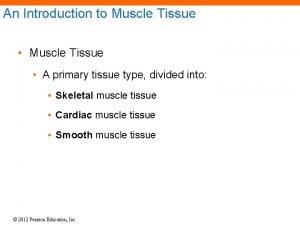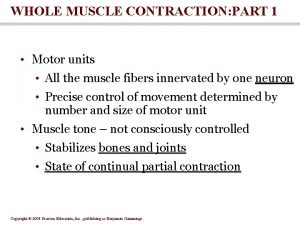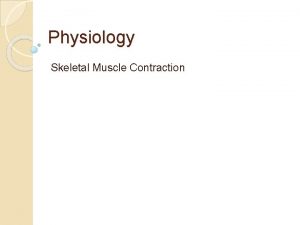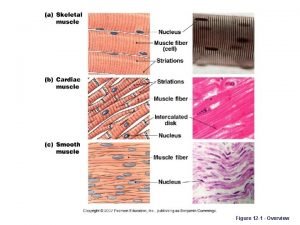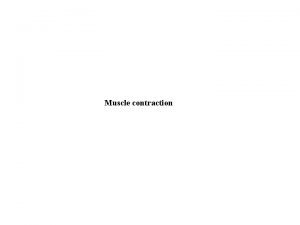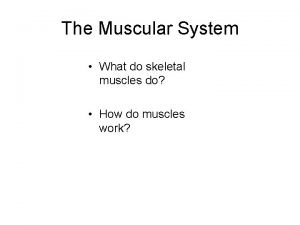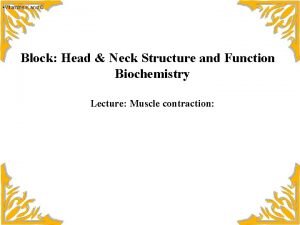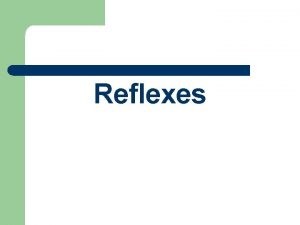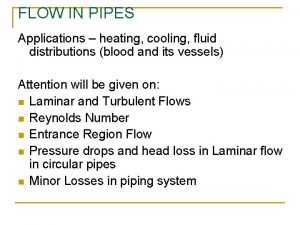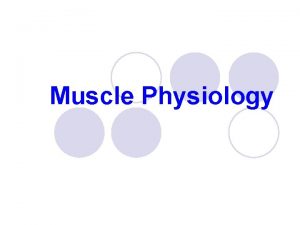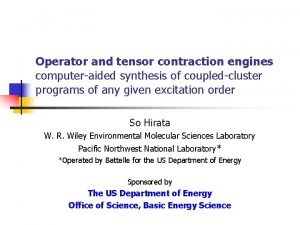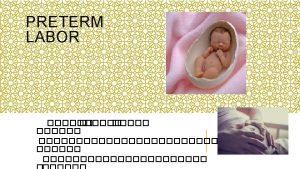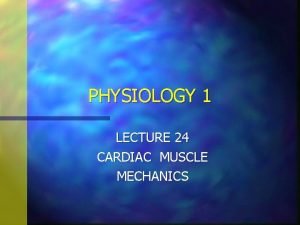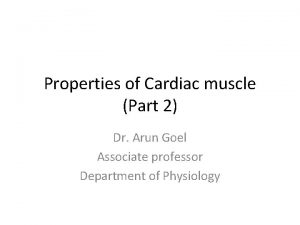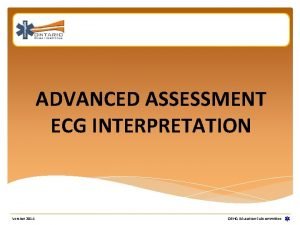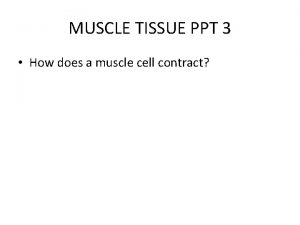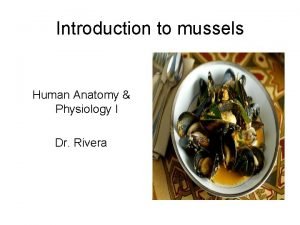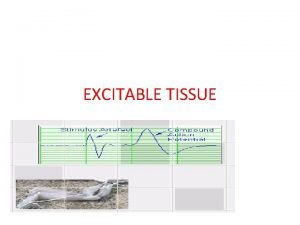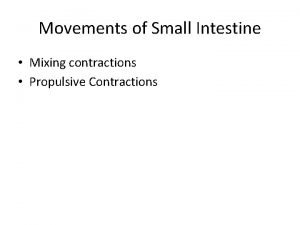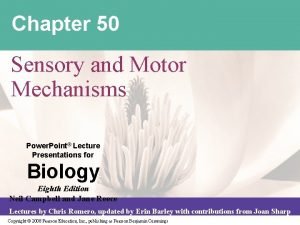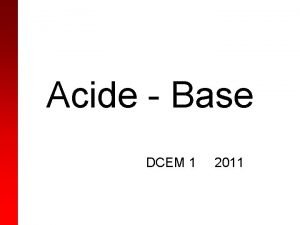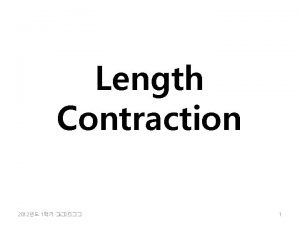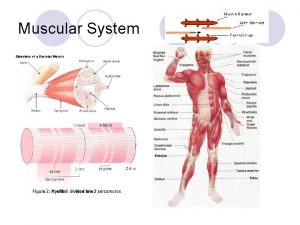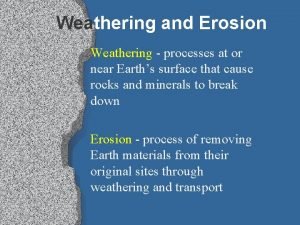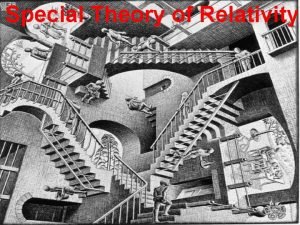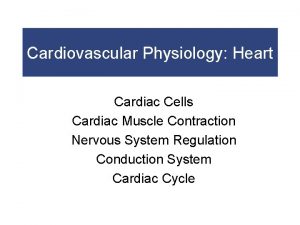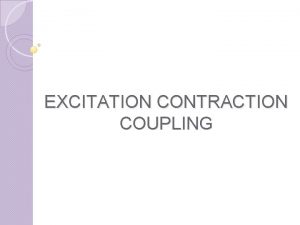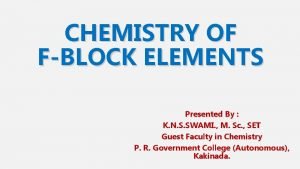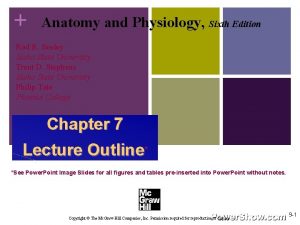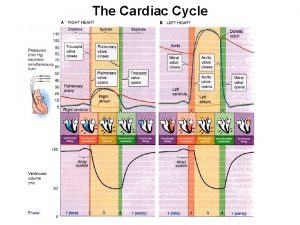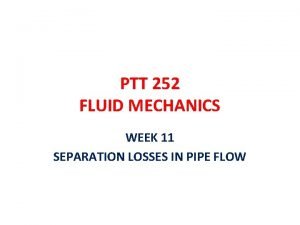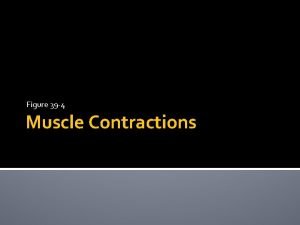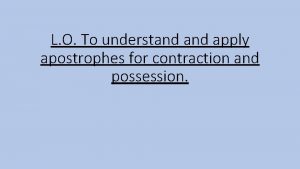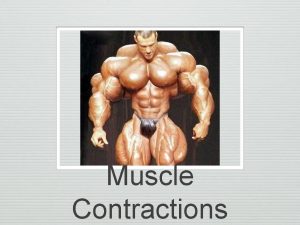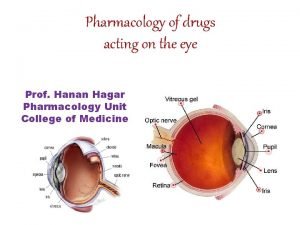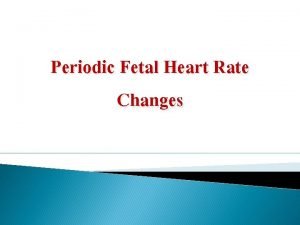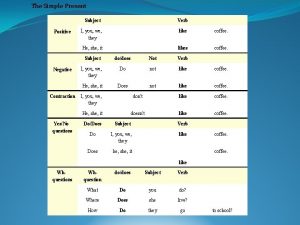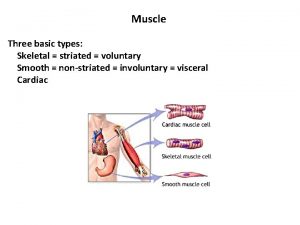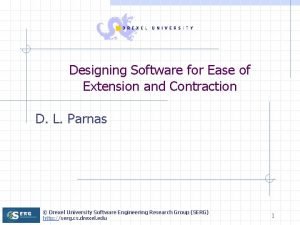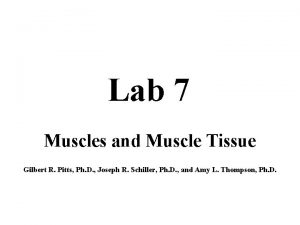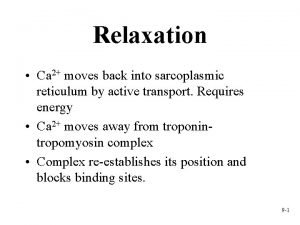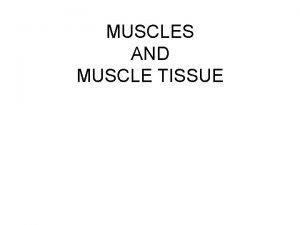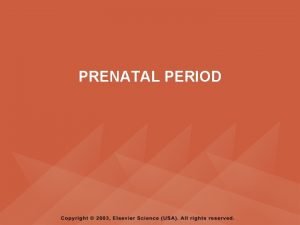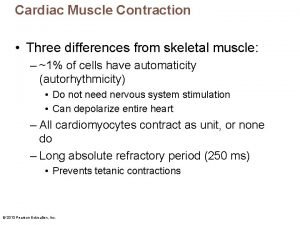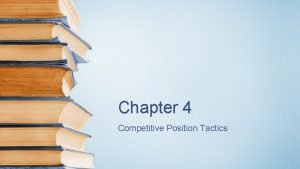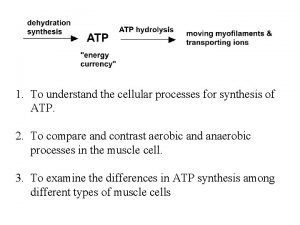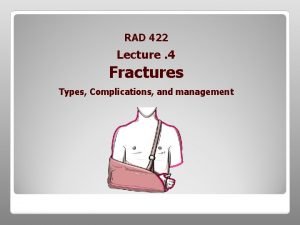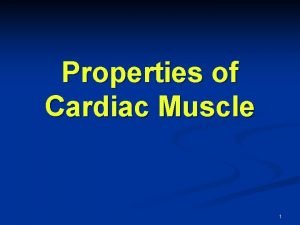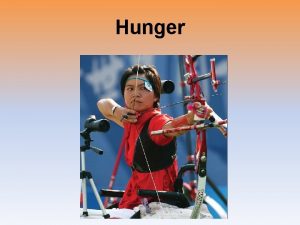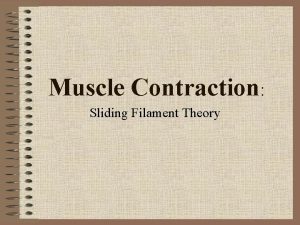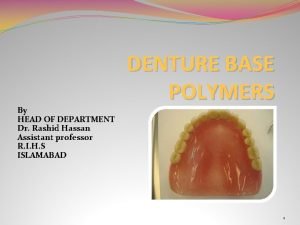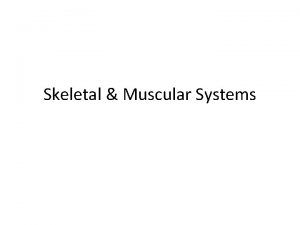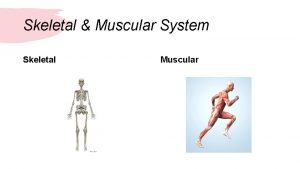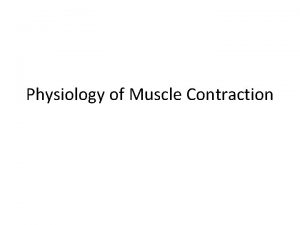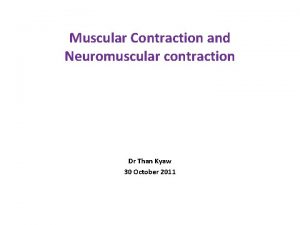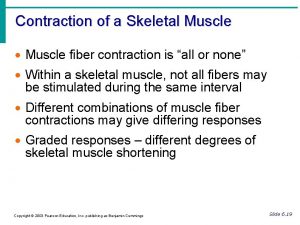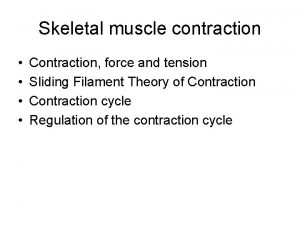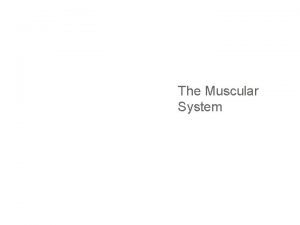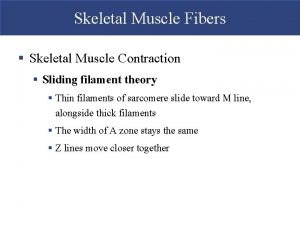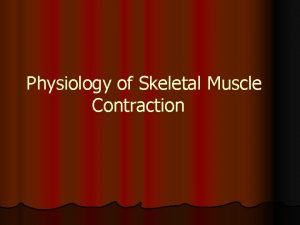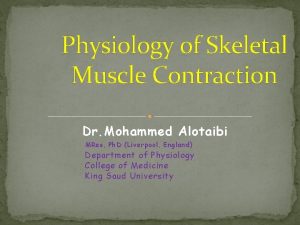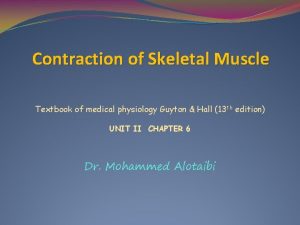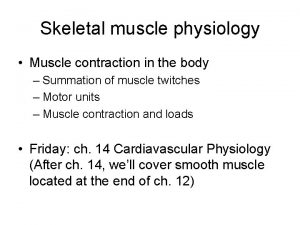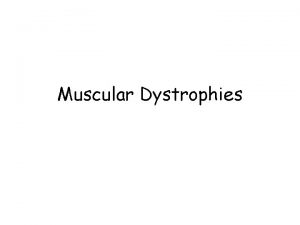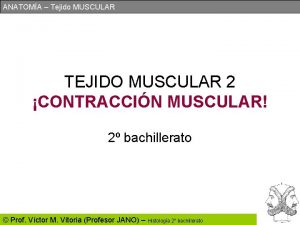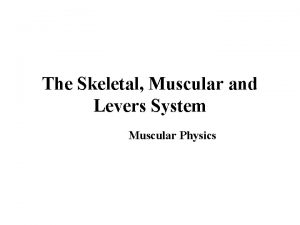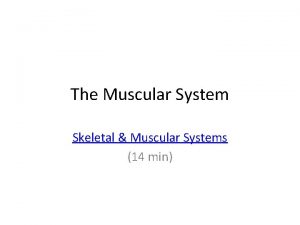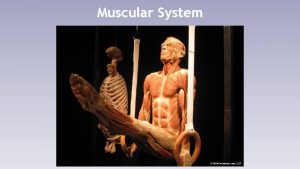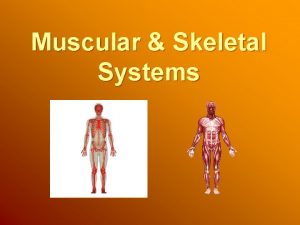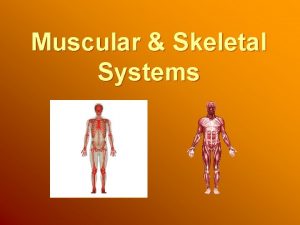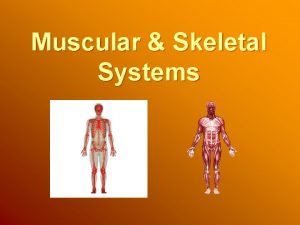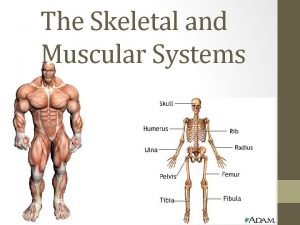Physiology Skeletal Muscular Contraction h vu Ro Rsmvkh



















































![DHP (dihydropyridine) receptors open Ca 2+ channels in t-tubules Intracytosolic [Ca 2+] Contraction Ca DHP (dihydropyridine) receptors open Ca 2+ channels in t-tubules Intracytosolic [Ca 2+] Contraction Ca](https://slidetodoc.com/presentation_image_h/2c3875e38150c0771763e2a75aa47d20/image-52.jpg)

















- Slides: 69

Physiology Skeletal Muscular Contraction

h? v=u. Ro. Rsmvkh. TI&eurl=http: //wendyusuallywanders. wordpress. com/? tag=myasthenia-grav


Connective Tissue l Endomysium l l l Perimysium l l l Surrounds each muscle fiber (cell) Attaches to Z-lines in each sarcomere Surrounds bundles (fascicles) of muscle fibers Attaches to endomysium Epimysium l l Attaches to the Perimysium Continuous with tendon


Sarcomere l l Repeating Patterns within the myofibrils Myofibrils l l l Proteins within the myofibers Myosin Actin

Muscle Anatomy l Sarcolemma l l Muscle fiber cell membrane Myofibrils l l Highly organized bundles of contractile and elastic proteins Carries out the work of contraction

Myofibrils = Contractile Organelles of Myofiber Contain 6 types of protein: l l l Actin Myosin Tropomyosin Troponin Titin Nebulin Contractile Regulatory Accessory


Titin and Nebulin l Titin: biggest protein known (25, 000 aa); elastic! l l l Stabilizes position of contractile filaments Return to relaxed location Nebulin: inelastic giant protein l Alignment of A & M

Changes in a Sarcomere during Contraction



Myosin l l Myo- muscle Motor protein of the myofibril Thick filament Attaches to the M-line l l l Heads point towards Z-lines Myosin heads are clustered at the ends of the filament Myosin tails are bundled together


Actin l Thin Filament l l Attached to Z-lines Globular protein l l G-Actin Has binding site for myosin head Forms a Cross-Bridge when myosin binds to G-actin Five Actin proteins surround the myosin in 3 -D pattern



Actin filament Binding sites Strong binding Weak binding Myosin head group S 2 link Stretching of the link generates tension Myosin filament


Why do thin filaments move? Net force Equal and opposite force on thick filament

Actin l Tropomyosin l Protein that covers over the myosin binding site on G-Actin l l Myosin head can’t bind to G-Actin, muscle relaxes If the binding site on G-Actin is uncovered by removing Tropomyosin then myosin and actin bind, muscle contracts

Actin l Troponin C l l l Protein attached to Tropomyosin When Troponin C changes shape it pulls on Tropomyosin l Calcium binding to Troponin C causes this protein to change shape Tropomyosin moves and uncovers the binding site on GActin, so Actin and Myosin can bind l Contraction

Regulation of Contraction by Troponin and Tropomyosin q Tropomyosin blocks myosin binding site (weak binding possible but no powerstroke) q Troponin controls position of tropomyosin and has Ca 2+ binding site q Ca 2+ present: binding of A & M q Ca 2+ absent: relaxation


Muscle Anatomy l Sarcoplasmic Reticulum l l Terminal Cisternae l l Modified endoplasmic reticulum Wraps around each myofibril like a piece of lace Stores Calcium Longitudinal tubules Transverse tubules (T-tubules) l l Triad-two flanking terminal cisternae and one t-tubule T-tubules are continuous with cell membrane

Role of calcium Tropomyosin Troponin complex • Troponin and Tropomyosin bind to actin block the actin – myosin binding sites • Troponin is a calcium binding protein

l When Troponin binds calcium it moves Tropomyosin away from the actin-myosin binding site Ca Ca

Where does Calcium come from? l l Intracellular storage called Sarcoplasmic Reticulum Surround each myofibril of the whole muscle Contains high concentration of calcium Transverse Tubules connects plasma membrane to deep inside muscle

T-Tubules l Rapidly moves action potentials that originate at the neuromuscular junction on the cell surface

Motor nerve Membrane depolarization or APs carried deep into the muscle by Ttubules T-tubule + Neurotransmitter receptors SR

SR Ryanodine Receptor T-tubule My SR myoplasm Dihydropyridine receptor

Ca++ SR Ca++ pump Myoplasm (intracellular) _ +_ + _ _ +_ + + _ + _+ _+ + T-tubule (extracellular)


Sliding Filament Theory l l l When myosin binds to the binding site on Gactin muscular contraction occurs. The more myosin that bind to G-actin the greater the force of contraction Calcium must be present



Sliding Filament Theory l l Cross Bridge l Myosin in the High Energy Configuration binds to G-Actin l ADP + Pi are bonded to the myosin head when the cross bridge forms Power Stroke l When the myosin and actin bind the myosin head changes shape l Myosin pulls the actin and pulls on the Z-line l Sarcomere shortens l ADP+Pi no longer binds to myosin head

Sliding Filament Theory l ATP binds to the myosin head l l Myosin changes to its Low Energy Confirmation In the Low Energy Confirmation Myosin breaks its bonds with Actin l Rigor Mortis § § Lack of ATP Build up of Lactic Acid

Sliding Filament Theory l ATPase l l l ATP is hydrolyzed to ADP + Pi ATPase is on the myosin head Myosin changes shape back to its High Energy Confirmation

Sliding Filament Theory l Some Myosin heads detach from Actin while other heads continue to keep their attachments l l No slipping of the Z-lines Contraction is held in place

What if we don’t have this? ATP X Actin + myosin Actomyosin complex Rigor mortis


Events at Neuromuscular Junction l Converts a chemical signal from a somatic motor neuron into an electrical signal in the muscle fiber

Events at Neuromuscular Junction l l Acetylcholine (Ach) is released from the somatic motor neuron Ach initiates an action potential in the muscle fiber The muscle action potential triggers calcium release from the sarcoplasmic reticulum Calcium combines with troponin C and initiates contractions

Events at Neuromuscular Junction l l Ach binds to cholinergic receptors on the motor end plate Na+ channels open l l Na+ influx exceeds K+ efflux across the membrane End-Plate Potential (EPP) l EPP reaches threshold and initiates a muscle action potential

Events at Neuromuscular Junction l Action Potentials move down the membrane l l K+ builds up in the t-tubules Depolarization occurs l l Calcium gates on the SR opens Calcium diffuses into the cytoplasm of the cell

Excitation-Contraction Coupling l The process where muscle action potentials initiate calcium signals that in turn activates a contraction-relaxation cycle

Initiation of Contraction Excitation-Contraction Coupling explains how you get from AP in axon to contraction in sarcomere ACh released from somatic motor neuron at the Motor End Plate AP in sarcolemma and T-Tubules Ca 2+ release from sarcoplasmic reticulum Ca 2+ binds to troponin

Details of E/C Coupling Nicotinic cholinergic receptors on motor end plate = Na+ /K+ channels Net Na entry creates EPSP AP to T-tubules DHP (dihydropyridine) receptors in T-tubules + sense depolarization

Nicotinic Cholinergic Receptors
![DHP dihydropyridine receptors open Ca 2 channels in ttubules Intracytosolic Ca 2 Contraction Ca DHP (dihydropyridine) receptors open Ca 2+ channels in t-tubules Intracytosolic [Ca 2+] Contraction Ca](https://slidetodoc.com/presentation_image_h/2c3875e38150c0771763e2a75aa47d20/image-52.jpg)
DHP (dihydropyridine) receptors open Ca 2+ channels in t-tubules Intracytosolic [Ca 2+] Contraction Ca 2+ re-uptake into SR Relaxation

Excitation-Contraction Coupling l High cytosolic Calcium levels binds to Troponin C l l l Tropomyosin moves to the “on” position and contraction occurs Calcium-ATPase pumps Calcium back into the SR The more myosin heads that binds to actin to stronger the force of contraction

Summary of events 1. 2. 3. 4. Synaptic Depolarization of the plasma membrane is carried into the muscle by TTubules Conformational change of dihydropyridine receptor directly opens the ryanodine receptor calcium channel Calcium flows into myoplasm where it binds troponin Calcium pumped back into SR


Neuromuscular Junction l l The more terminal boutons to attach to myofibers the greater the control of the muscle. Recruitment l The greater the number of terminal boutons attached to myofibers there is more fine control of the muscle


Excitation-Contraction Coupling l Twitch l l l A single contraction-relaxation cycle in a skeletal muscle fiber A single action potential in a muscle fiber Latent Period l l Between the muscle action potential Time required for excitation-contraction coupling to take place

Is There Truth In Advertising? l l l Is the banana company telling the truth when they claim that bananas being high in Potassium actually prevents or relieves muscle cramps? If so, how does this increase in Potassium relieve muscle cramps? If not, why not and how do we actually relieve muscle cramps?


Muscle Contraction and ATP Supply l Phosphocreatine l l Backup energy source Quick energy used up in approx. 15 minutes

Causes of Fatigue l Central Fatigue l l l Subjective feelings of tiredness Arises in the CNS Psychological fatigue precedes physiological fatigue in the muscles l l Subjective feelings of tiredness Low p. H may cause fatigue

Oxidative only Oxidative or glycolytic Muscle Fiber Classification

Muscle Adaptation to Exercise Endurance training: l More & bigger mitochondria l More enzymes for aerobic respiration Resistance training: l More actin & myosin proteins & more sarcomeres l l More myoglobin no hypertrophy More myofibrils muscle hypertrophy

Causes of Fatigue l Peripheral Fatigue l l Arises between the neuromuscular junction and the contractile elements of the muscle Ach depletion, neuromuscular junction receptor loss l Myasthenia Gravis

Skeletal Muscle Types l Fast-twitch muscle fibers (type II) l White Fibers l l Low Myoglobin Develops tension two to three times faster than slow-twitch fibers Splits ATP more rapidly to complete contraction faster Fatigues quickly

Skeletal Muscle Types l Slow-twitch Muscle Fibers (Type I) l l l Red High Myoglobin levels Slow to Fatigue

Contractions l Isometric Contractions l l Creates force without movement Isotonic Contractions l Moves loads

 Fusiform muscle
Fusiform muscle Motor end plates
Motor end plates Physiology of muscle contraction
Physiology of muscle contraction Cross bridge myosin head
Cross bridge myosin head Figure 12
Figure 12 Muscular contraction
Muscular contraction Anatomy and physiology chapter 8 skeletal system
Anatomy and physiology chapter 8 skeletal system Major skeletal muscles
Major skeletal muscles Skeletal and muscular system
Skeletal and muscular system Chapter 36 skeletal muscular and integumentary systems
Chapter 36 skeletal muscular and integumentary systems Chapter 14 lesson 3 the nervous system
Chapter 14 lesson 3 the nervous system Differentiate muscular strength from muscular endurance
Differentiate muscular strength from muscular endurance Muscle contraction biochemistry
Muscle contraction biochemistry Brisk reflexes
Brisk reflexes Inward projecting pipe entrance
Inward projecting pipe entrance Lanthanide contraction
Lanthanide contraction Muscle twitch
Muscle twitch Tensor contraction engine
Tensor contraction engine 70 on contraction monitor
70 on contraction monitor Length tension relationship muscle
Length tension relationship muscle Properties of cardiac muscle
Properties of cardiac muscle Sinus with pjc
Sinus with pjc Block nhĩ thất độ 2 mobitz 2
Block nhĩ thất độ 2 mobitz 2 Esophagus narrowing anatomy
Esophagus narrowing anatomy Muscle tissue ppt
Muscle tissue ppt Isotonic muscle contraction
Isotonic muscle contraction Twitch height of contraction
Twitch height of contraction Peristaltic contraction
Peristaltic contraction Whole muscle contraction
Whole muscle contraction Alcalose de contraction
Alcalose de contraction Proper length
Proper length Muscle contraction types
Muscle contraction types Expansion and contraction weathering
Expansion and contraction weathering Michelson morley experiment
Michelson morley experiment Cardiac output stroke volume and heart rate
Cardiac output stroke volume and heart rate Contraction
Contraction Actinide contraction
Actinide contraction Phases of muscle contraction
Phases of muscle contraction Cardiac cycle
Cardiac cycle Gradual contraction loss coefficient
Gradual contraction loss coefficient Muscle contraction animation mcgraw hill
Muscle contraction animation mcgraw hill Contraction of they are
Contraction of they are Muscle contraction
Muscle contraction Ciliary muscle contraction
Ciliary muscle contraction Fetal deceleration
Fetal deceleration Encirclement attack examples
Encirclement attack examples Positive negative
Positive negative 3 phases of muscle contraction
3 phases of muscle contraction Product contraction
Product contraction Meiotonic contraction
Meiotonic contraction Tetanus vs summation
Tetanus vs summation Uterine irritability vs braxton hicks
Uterine irritability vs braxton hicks Extension design software
Extension design software Muscle
Muscle Phases of muscle contraction
Phases of muscle contraction Aice general paper final exam
Aice general paper final exam Treppe
Treppe Negative contraction stress test strip
Negative contraction stress test strip Isotonic vs isometric contraction
Isotonic vs isometric contraction Compensated shock
Compensated shock Intrinsic cardiac conduction system
Intrinsic cardiac conduction system Contraction of product mix
Contraction of product mix Flank defense strategy examples
Flank defense strategy examples Phases of muscle contraction
Phases of muscle contraction 4r fracture
4r fracture Properties of cardiac muscles
Properties of cardiac muscles Contraction
Contraction Physiology of hunger
Physiology of hunger Sarcomere sliding filament model
Sarcomere sliding filament model Gaseous porosity denture
Gaseous porosity denture

